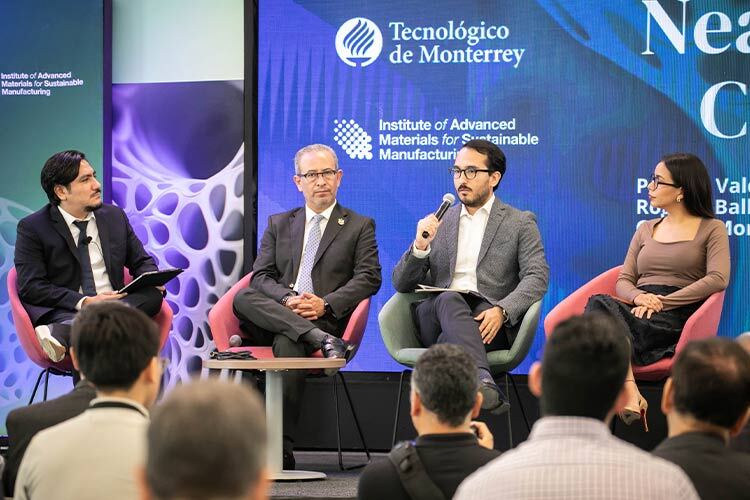To harness the potential of nearshoring, a collective effort is needed through a “triple helix” model that involves the government, industry, and academic and research institutions.
Officials from Oaxaca, Nuevo León, and Querétaro shared their region-specific requirements at the panel, Nearshoring Needs in Northern, Central, and Southern Mexico, held during the Third International Conference on Advanced Materials, organized by the Institute of Advanced Materials for Sustainable Manufacturing (IAMSM).
Three Essential Steps for Successful Nearshoring Across Mexico
- Building Local Talent
Rogelio Ballesteros, advisor to the Oaxaca Ministry of Economic Development, emphasized that despite Oaxaca’s distance from the U.S. border, the region is positioning itself as a global commercial bridge through the Isthmus of Tehuantepec Interoceanic Corridor, which would link the Atlantic and Pacific Oceans.
To achieve this, Oaxaca is fostering local talent by developing a skilled and competitive workforce for its industries and promoting the growth of small and micro-enterprises in order to strengthen the local market, with the goal of converting the state into a technological hub.

2. Adapting to Foreign Companies’ Resilience
Pamela Valdez, Director of Productive Chains in Nuevo León, explained that the state employs a triple-helix model with industry clusters, where companies from the same sector are concentrated in specific areas and have access to talent trained at local universities, such as Tec de Monterrey.
Nuevo León is experiencing one of its most significant industrial expansions, leveraging its proximity to its primary trading partner, the U.S. The state’s focus includes infrastructure and connectivity development, with new highways, railways, and direct flights to the U.S.
Supply chains in Nuevo León have had to adapt to be resilient, she added, as foreign companies often bring their own values, production lines, and international standards, requiring local companies to meet these benchmarks.
Montes noted that states are attuned to nearshoring needs and are actively exploring solutions, whether by attracting investment or developing new supply chains.
“We need human capital, science, technology, and innovation. We must look at internal links, certifications, ISO standards, and client development. Without collective efforts, nearshoring progress can’t be achieved,” he said.
He also emphasized balancing economic growth with resource management, including funding for small and medium-sized enterprises with energy efficiency and electromobility projects.

3. Doing It Sustainably
Genaro Montes, Deputy Secretary of Economic Development for Querétaro’s Department of Sustainable Development, underlined the importance of policies that make companies more productive by prioritizing sustainability and environmental stewardship, such as emissions taxes.
“As a government, we faced criticism for implementing this tax. Companies didn’t welcome it initially but realized it wasn’t about revenue collection—it fostered competition among companies to meet Sustainable Development Goals. If they don’t address emission offset targets, they’ll fall behind,” Montes said.
He also cited a circular economy law that incentivizes companies adopting recycling and waste reuse processes.

Nearshoring’s Potential for Mexico
In his opening remarks at the Conference, Feniosky Peña-Mora, Executive Vice President for Research and Dean of Tec’s School of Engineering and Sciences, noted that nearshoring is reshaping global supply chains by bringing production closer to consumer markets.

Peña-Mora stressed that public and private sectors, alongside educational and research institutions, must collaborate to seize this unique opportunity and tackle its challenges.
Tec’s 2030 Research Strategy is geared toward building an ecosystem that drives positive impact from lab discoveries, Peña-Mora explained. IAMSM aims to generate new knowledge and develop sustainable manufacturing technologies.
Through sustainable manufacturing materials, their goal is to help meet global consumer demand sustainably and to build a better future for upcoming generations.
“Mexico has the advantage of being the eighth-largest economy with global trade agreements, giving access to over 1,500 million consumers across more than 50 countries. Science and research are powerful tools for change, and we’re convinced of their potential to shape a more sustainable and prosperous future for everyone,” Peña-Mora concluded.
Were you interested in this story? Do you want to publish it? Contact our content editor to learn more at marianaleonm@tec.mx.















